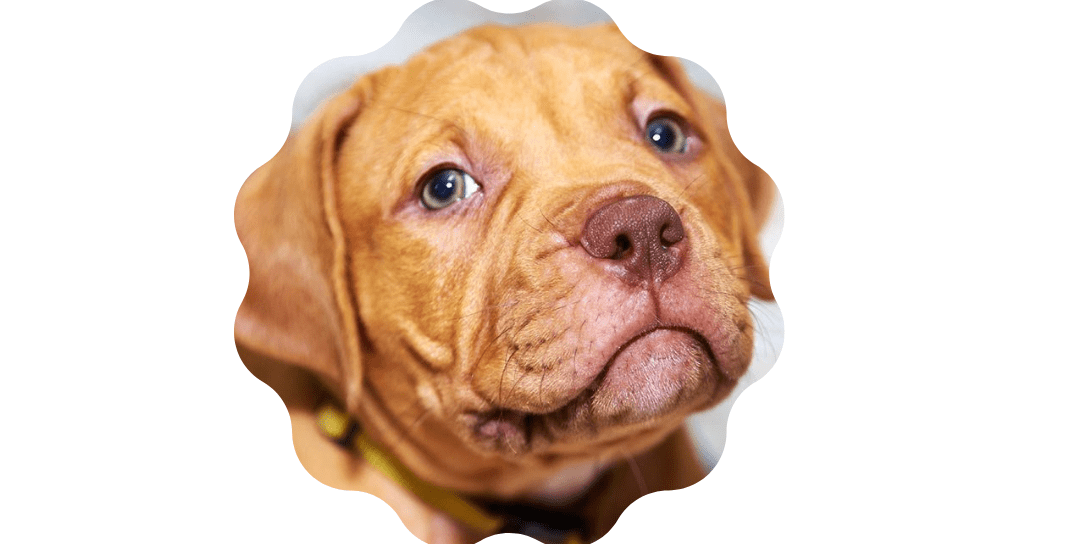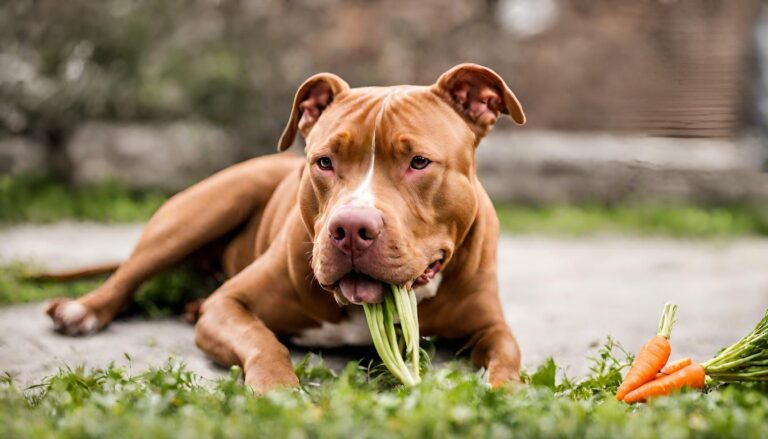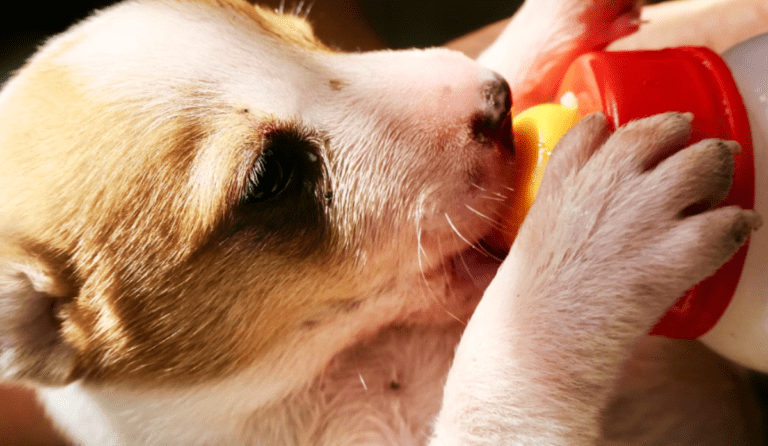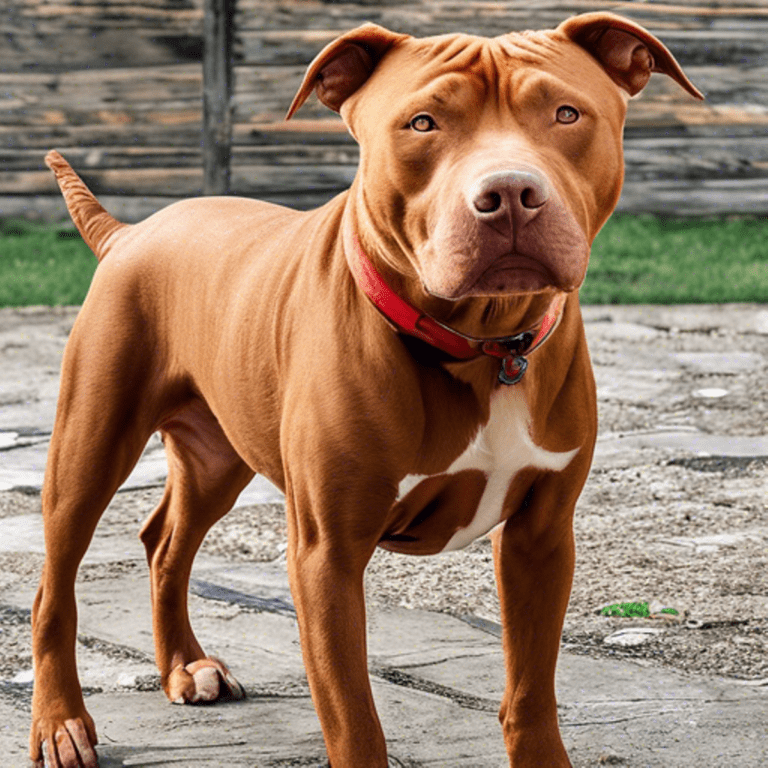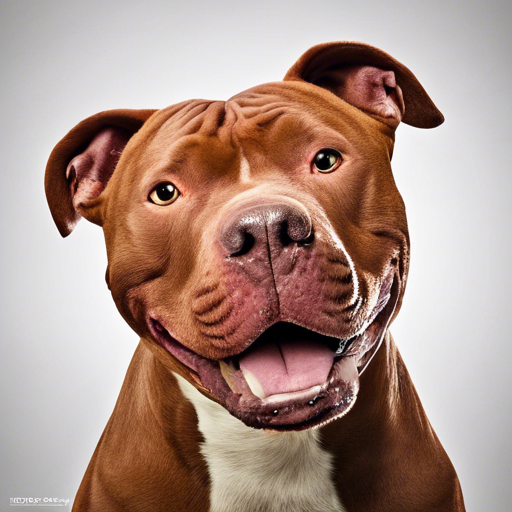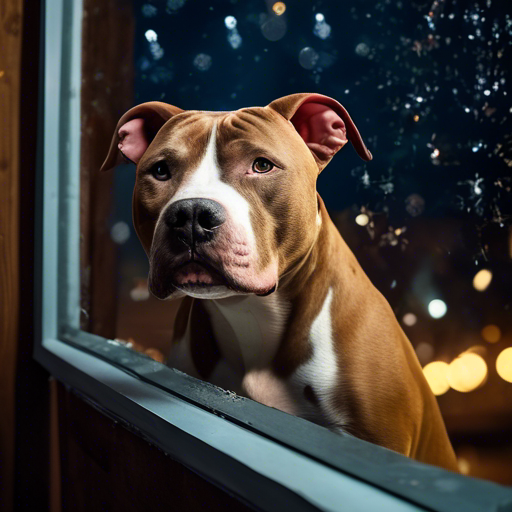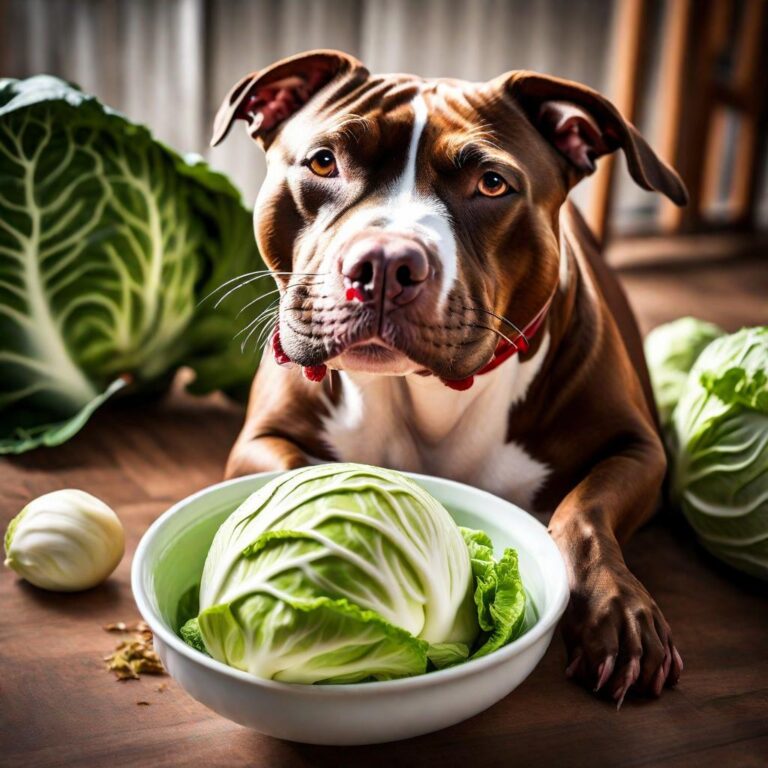The Complete Guide to Red Nose Pitbulls: Characteristics, Care, and Training Tips
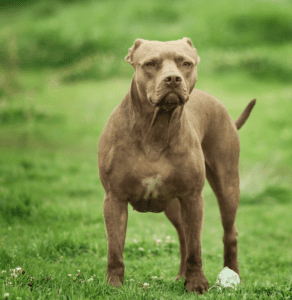
I. Introduction
Red Nose Pitbulls are a unique and fascinating breed that often garners both curiosity and misconceptions. In this guide, we’ll delve into the world of Red Nose Pitbulls, exploring their characteristics, care needs, and training tips. Let’s begin by understanding what makes these dogs so special and the history behind their red noses.
II. What Makes Red Nose Pitbulls Unique?
-
Genetics and Physical Characteristics
- The distinctive red nose and coat coloration
- Muscular build and athletic physique
- Average height and weight range
-
Temperament Traits
- Gentle and affectionate nature towards humans
- Loyalty and protective instincts
- Misunderstood reputation versus reality
-
Myths vs. Reality: Dispelling Common Misconceptions
- Addressing misconceptions about aggression
- Separating facts from myths surrounding temperament
- Highlighting the loving and loyal nature of Red Nose Pitbulls
III. The Origins of the Red Nose Pitbull
-
Historical Background
- Tracing the roots of the Red Nose Pitbull breed
- Origins in the United States and breeding history
-
Famous Red Nose Pitbulls Throughout History
- Notable Red Nose Pitbulls in popular culture
- Contributions of famous owners and breeders
IV. Breeding and Genetics
-
Red Nose Pitbull Bloodlines
- Overview of popular bloodlines and pedigrees
- Characteristics and traits associated with specific bloodlines
-
Health Considerations and Genetic Disorders
- Common health issues in Red Nose Pitbulls
- Genetic predispositions and responsible breeding practices
-
Responsible Breeding Practices
- Importance of health screenings and genetic testing
- Ethical considerations in breeding Red Nose Pitbulls
V. Red Nose Pitbulls as Pets
-
Preparing for Ownership
- Understanding the commitment involved
- Preparing your home and family for a new pet
-
Choosing a Reputable Breeder or Adoption Center
- Researching breeders and adoption centers
- Questions to ask when selecting a breeder or shelter
-
Bringing Your Red Nose Pitbull Home: Initial Steps and Considerations
- First-day essentials and preparation tips
- Introducing your Pitbull to their new environment
VI. Understanding Red Nose Pitbull Behavior
-
Socialization Needs
- Importance of early socialization
- Exposing your Pitbull to various environments and stimuli
-
Training Requirements and Methods
- Positive reinforcement training techniques
- Basic obedience commands for Red Nose Pitbulls
-
Addressing Aggression: Tips for Effective Training
- Recognizing signs of aggression
- Implementing behavior modification techniques
VII. Diet and Nutrition
-
Nutritional Needs for Red Nose Pitbulls
- Balanced diet requirements for optimal health
- Recommended feeding schedules and portion sizes
-
Recommended Foods and Supplements
- High-quality dog food options
- Supplement recommendations for joint health and coat condition
-
Special Dietary Considerations
- Tailoring diet to individual health needs
- Addressing allergies and sensitivities
VIII. Grooming and Maintenance
-
Coat Care Tips
- Brushing and grooming frequency
- Managing shedding and maintaining coat health
-
Bathing and Hygiene Practices
- Bathing frequency and techniques
- Ear cleaning and dental care routines
-
Dental Care and Nail Trimming
- Importance of regular dental hygiene
- Safe and effective nail trimming methods
IX. Exercise and Physical Activity
- Importance of Regular Exercise
- Meeting the exercise needs of an active breed
- Incorporating physical activity into daily routines
-
Fun Activities for Red Nose Pitbulls
- Engaging in interactive play and games
- Outdoor adventures and exercise opportunities
-
Exercise Safety Guidelines
- Preventing overheating and dehydration
- Choosing appropriate exercise environments
X. Health and Wellness
-
Common Health Issues in Red Nose Pitbulls
- Overview of breed-specific health concerns
- Signs and symptoms to watch for
-
Regular Veterinary Checkups
- Importance of routine vet visits
- Vaccination and parasite prevention schedules
-
Vaccination and Preventative Care
- Essential vaccinations for Red Nose Pitbulls
- Flea, tick, and heartworm prevention methods
XI. Red Nose Pitbulls in Families
-
Compatibility with Children and Other Pets
- Assessing compatibility based on temperament
- Tips for introducing a Pitbull to children and other pets
-
Supervision and Safety Tips
- Teaching children proper interaction with dogs
- Preventing accidents and conflicts in multi-pet households
-
Building a Strong Bond with Your Pitbull
- Strengthening the human-dog bond through positive interactions
- Activities to promote trust and companionship
XII. Legal and Ethical Considerations
-
Breed-Specific Legislation (BSL) Awareness
- Understanding the impact of BSL on Pitbull ownership
- Advocating for fair and informed legislation
-
Advocacy and Responsible Ownership
- Promoting responsible pet ownership practices
- Supporting Pitbull advocacy organizations and initiatives
-
Fighting Stereotypes: Being a Good Ambassador for the Breed
- Challenging stereotypes through positive representation
- Educating others about the true nature of Red Nose Pitbulls
XIII. Training and Obedience
-
Basic Commands Every Red Nose Pitbull Should Know
- Sit, stay, come: essential obedience commands
- Leash training and walking etiquette
-
Positive Reinforcement Techniques
- Reward-based training methods for desired behaviors
- Using treats, toys, and praise as motivators
-
Advanced Training for Red Nose Pitbulls
- Agility training and sports participation
- Advanced obedience training for mental stimulation
XIV. Red Nose Pitbulls in Media and Pop Culture
-
Representation in Film, TV, and Literature
- Famous Pitbull characters in entertainment
- Impact of media portrayal on breed perception
-
Famous Red Nose Pitbull Owners
- Celebrities and public figures who own Pitbulls
- Positive influence of celebrity endorsements on breed reputation
-
The Pitbull Advocacy Movement
- Grassroots efforts to promote Pitbull welfare
- Advocacy campaigns and initiatives
XV. Red Nose Pitbulls Around the World
-
Global Popularity and Variations
- Regions where Red Nose Pitbulls are most common
- Cultural preferences and variations in breed standards
-
Cultural Perceptions and Traditions
- How different cultures view Pitbulls
- Traditional roles and associations with the breed
XVI. Red Nose Pitbull Rescue and Adoption
-
The Importance of Adoption
- Saving lives through adoption
- Benefits of adopting a Pitbull from a shelter
-
Finding Red Nose Pitbulls in Shelters
- Search tips for finding Pitbulls available for adoption
- Resources for locating Pitbull-specific rescue organizations
-
Tips for a Successful Adoption Process
- Preparing for the adoption journey
- What to expect during the adoption process
XVII. Frequently Asked Questions
-
What distinguishes a Red Nose Pitbull from other Pitbull breeds?
- primarily their unique physical trait: the red-colored nose. While all Pitbull breeds share common ancestry and general characteristics, such as a muscular build and loyal temperament, the red nose sets the Red Nose Pitbull apart. This distinctive feature is a result of genetic factors, specifically related to pigmentation. Red Nose Pitbulls often have a reddish-brown or copper-colored nose, which contrasts with the typical black nose seen in other Pitbull variations. Additionally, Red Nose Pitbulls may exhibit slightly different coat colors and patterns compared to other Pitbull breeds, although these differences can vary within individual dogs and bloodlines. It’s essential to note that despite these physical distinctions, Red Nose Pitbulls share the same loving and loyal nature as their counterparts, making them cherished companions for those who appreciate the breed’s qualities.
-
Are Red Nose Pitbulls more aggressive than other breeds?
- No, Red Nose Pitbulls are not inherently more aggressive than other breeds. Like all dog breeds, their behavior is influenced by various factors, including genetics, upbringing, socialization, and training. Unfortunately, Pitbulls, including Red Nose Pitbulls, have often been subject to unfair stereotypes and misconceptions regarding aggression. However, responsible breeding, proper socialization from an early age, and positive training techniques can help nurture a well-behaved and gentle temperament in Red Nose Pitbulls. It’s important to judge each dog as an individual and not generalize based on breed alone. With love, care, and appropriate training, Red Nose Pitbulls can be loving, loyal, and affectionate companions.
-
How can I socialize my Red Nose Pitbull properly?
- Socializing your Red Nose Pitbull properly is essential for fostering good behavior and confidence in various situations. Here are some tips to help you socialize your Pitbull effectively:
- Start Early: Begin socialization as soon as possible, ideally during puppyhood. Early exposure to different people, animals, environments, and experiences helps your Pitbull become more adaptable and well-adjusted.
- Positive Experiences: Ensure that all socialization experiences are positive and enjoyable for your Pitbull. Use treats, praise, and toys to reinforce good behavior and create positive associations with new people, places, and things.
- Gradual Exposure: Introduce your Pitbull to new experiences gradually and at a pace that they are comfortable with. Start with low-stress environments and gradually increase exposure to more challenging situations.
- Variety: Expose your Pitbull to a wide range of people, including adults, children, and individuals wearing hats, glasses, or uniforms. Similarly, introduce them to different animals, such as dogs, cats, and other pets, in controlled settings.
- Obedience Training: Teach basic obedience commands, such as sit, stay, come, and leave it, to help your Pitbull navigate social situations calmly and confidently. Consistent training builds trust and strengthens your bond with your dog.
- Supervised Interactions: Always supervise interactions with other dogs and animals, especially during the initial stages of socialization. Intervene if necessary to prevent conflicts or ensure that interactions remain positive.
- Desensitization: Gradually expose your Pitbull to potentially frightening or overwhelming stimuli, such as loud noises, crowds, or unfamiliar objects. Use desensitization techniques, such as gradual exposure and positive reinforcement, to help your dog become more comfortable and confident.
- Regular Outings: Take your Pitbull on regular outings to different places, such as parks, pet-friendly stores, and outdoor events. Exposing them to various environments helps them become more adaptable and well-rounded.
- Consistency: Be consistent in your socialization efforts and incorporate socialization into your Pitbull’s daily routine. Regular exposure to new experiences and stimuli helps reinforce positive behavior and build confidence over time.
- Patience and Persistence: Socialization is an ongoing process that requires patience, persistence, and dedication. Stay committed to providing your Pitbull with positive social experiences throughout their life to help them become confident, well-adjusted companions.
By following these tips and prioritizing positive socialization experiences, you can help your Red Nose Pitbull develop into a friendly, well-mannered, and confident canine companion.
- Socializing your Red Nose Pitbull properly is essential for fostering good behavior and confidence in various situations. Here are some tips to help you socialize your Pitbull effectively:
-
What are some common health issues in Red Nose Pitbulls?
- While Red Nose Pitbulls are generally healthy and robust dogs, like all breeds, they may be prone to certain health issues. Some common health issues seen in Red Nose Pitbulls include:
- Hip Dysplasia: A hereditary condition where the hip joint doesn’t develop properly, leading to discomfort, pain, and mobility issues.
- Allergies: Red Nose Pitbulls can develop allergies to various environmental factors, such as pollen, dust, or certain foods, resulting in skin irritation, itching, and ear infections.
- Skin Conditions: Pitbulls, including Red Noses, may be prone to skin issues like dermatitis, hot spots, and mange due to their short coat and sensitive skin.
- Heart Disease: Some Red Nose Pitbulls may be predisposed to heart conditions, such as dilated cardiomyopathy (DCM), which can affect heart function and lead to heart failure.
- Obesity: Without proper diet and exercise, Pitbulls can become overweight or obese, increasing the risk of joint problems, diabetes, and other health issues.
- Cancer: Like many large breeds, Red Nose Pitbulls may be susceptible to various forms of cancer, including mast cell tumors, lymphoma, and osteosarcoma.
- Joint Problems: In addition to hip dysplasia, Red Nose Pitbulls may develop other joint issues like patellar luxation (dislocated kneecap) or cruciate ligament tears, which can cause lameness and discomfort.
- Eye Problems: Some Pitbulls may be prone to inherited eye conditions such as cataracts, cherry eye, or progressive retinal atrophy (PRA), which can affect vision and eye health.
- Ear Infections: Due to their floppy ears, Red Nose Pitbulls may be more susceptible to ear infections caused by bacteria, yeast, or parasites if not kept clean and dry.
- Parasites: External parasites like fleas and ticks, as well as internal parasites like worms, can affect Red Nose Pitbulls if not properly prevented and treated.
Regular veterinary check-ups, proper nutrition, regular exercise, and preventive measures such as vaccinations, parasite control, and dental care can help reduce the risk of these health issues and ensure your Red Nose Pitbull leads a happy and healthy life.
- While Red Nose Pitbulls are generally healthy and robust dogs, like all breeds, they may be prone to certain health issues. Some common health issues seen in Red Nose Pitbulls include:
-
Are Red Nose Pitbulls good with children?
- Yes, Red Nose Pitbulls can be excellent companions for children when properly socialized and trained. Contrary to common misconceptions, Red Nose Pitbulls are known for their affectionate, loyal, and gentle nature, making them great family pets. Here’s why Red Nose Pitbulls can be good with children:
- Loving and Affectionate: Red Nose Pitbulls are known for their love and devotion to their human family members. They often form strong bonds with children and enjoy spending time with them.
- Patient Temperament: When raised in a loving environment and socialized from an early age, Red Nose Pitbulls exhibit patience and tolerance towards children. They can be gentle and playful companions for kids of all ages.
- Protective Instincts: Red Nose Pitbulls are naturally protective of their family members, including children. While they are loyal guardians, they are not typically aggressive without provocation and will often show protective behaviors towards children.
- Steady Temperament: Red Nose Pitbulls have stable and predictable temperaments, which can make them predictable and reliable around children. They are less likely to exhibit sudden or unpredictable behaviors.
- Energetic Playmates: Pitbulls are active and energetic dogs, which means they can keep up with the energy levels of children. They enjoy outdoor activities and games, making them fun playmates for kids.
- Socialization and Training: Proper socialization and training are key factors in determining a Red Nose Pitbull’s behavior around children. Early socialization helps them become accustomed to children and learn appropriate behavior, while positive reinforcement training teaches them to interact safely and respectfully.
- Supervision: Like with any dog breed, supervision is essential when Red Nose Pitbulls interact with children, especially younger kids. Teaching children how to behave around dogs and supervising their interactions can prevent accidents and ensure positive experiences for both the dog and the child.
Overall, Red Nose Pitbulls can form strong bonds with children and make loving, loyal, and protective family pets when raised in a nurturing environment and provided with proper training and socialization. With responsible ownership and positive interactions, Red Nose Pitbulls can be wonderful additions to families with children.
- Yes, Red Nose Pitbulls can be excellent companions for children when properly socialized and trained. Contrary to common misconceptions, Red Nose Pitbulls are known for their affectionate, loyal, and gentle nature, making them great family pets. Here’s why Red Nose Pitbulls can be good with children:
-
Do Red Nose Pitbulls require a lot of exercise?
-
XVIII. Conclusion
In conclusion, Red Nose Pitbulls are remarkable companions with unique characteristics and care needs. By understanding their origins, behavior, and health requirements, we can provide them with the love and care they deserve. Let’s celebrate the Red Nose Pitbull’s resilience and affectionate nature, while advocating for responsible ownership and dispelling myths surrounding the breed.
